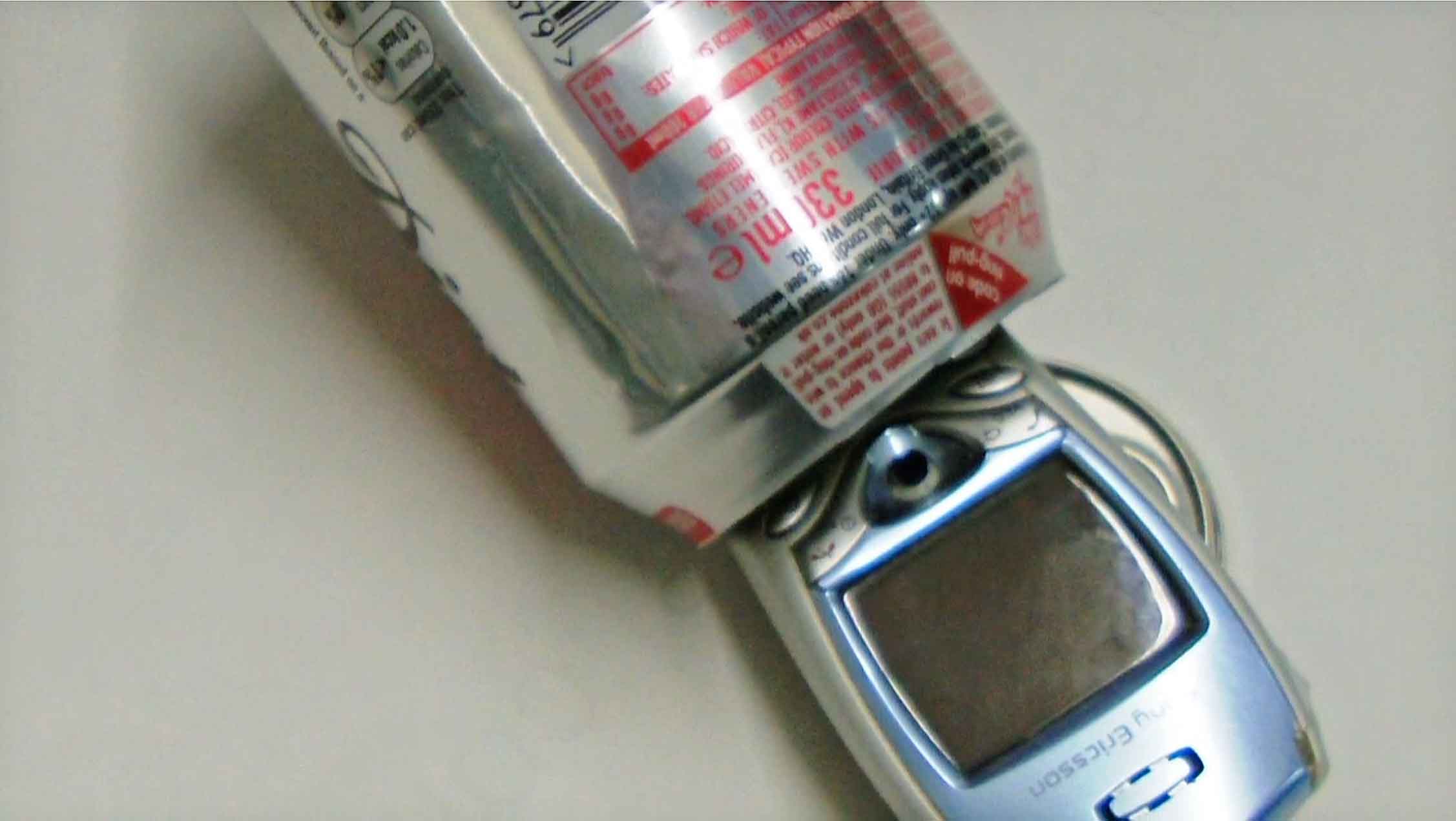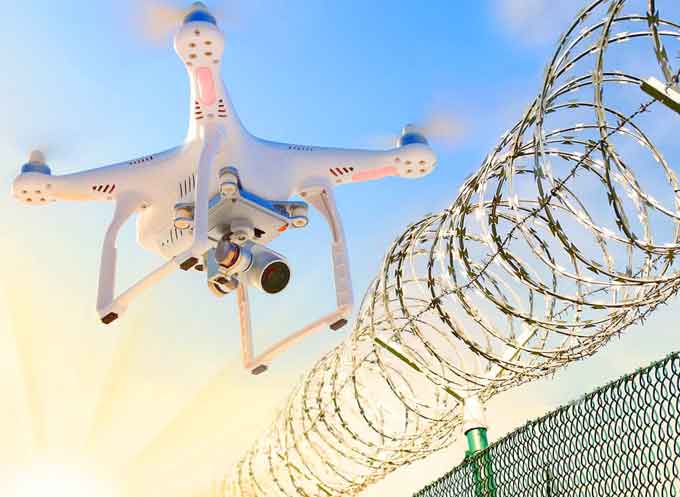
Almost as long as prisons and jails have been in existence there have been efforts for inmates to get their hands on illegal contraband.
It is commonplace for weapons and tools to be made from materials gathered within the institution walls – kitchen items, stones, workshop tools, and more.
Today, creativity, planning and collaboration have changed the landscape a bit and have added a whole new set of problematic items that inmates desire.
Whatever the item, it is very much a situation of supply and demand, and there are many willing participants.
While inmates have gotten more and more adaptive with their techniques, the correctional systems are deploying technology, best practices, and new procedures to keep pace.
THE CONTRABAND ENTERPRISE
Contraband and the means by which it enters facilities, is highly adaptive and continually poses a significant threat.
Technology and regulation have both begun to move in a parallel direction to bring consistent, evolving interdiction protocols intended to make it increasingly difficult to deal in contraband and easier for institutions to deploy technology.
Yet, with improvements in technology that aids the correctional institutions, technology also becomes a useful tool for the inmates.
Threats And Vulnerabilities
1 MODE OF ENTRY CONTINUES TO EVOLVE
Commercially available technology is now being revealed as a tool that conspirators are using to smuggle contraband to inmates.
Unmanned aerial vehicles (UAV’s), or drones, are getting more attention in their use to deliver illicit items into prison and jail yards.
(The UK Ministry of Defense has released footage of a gang caught using a drone to deliver contraband to prisons. The ringleader of the gang, was ultimately sentenced to an extra 7 years and 2 months in jail. Courtesy of BBC News and YouTube. Posted on Dec 13, 2017)
The Federal Aviation Administration predicts that small, hobbyist UAV’s will grow from 1.9 million units in 2016 to 4.3 million units by 2020¹.
This rise in usage will certainly bring about new techniques to get inmates the illicit items they seek, from drugs to guns and other weapons.
A featured article in the November/ December 2016 issue of Corrections Today delves into the details of different drone technologies and the technological capabilities at play in presenting a dynamic threat requiring unique detection solutions2.
To date, incidents involving contraband being delivered by drone have been reported in California, Maryland, Georgia, Ohio, South Carolina and Oklahoma.
(Drones Deliver Smuggled Phones to Inmates. Courtesy of Fox 5 Atlanta. Posted on Jan 15, 2016)
Outside of the US, incidents have been reported in Canada, Mexico, Ireland, Australia and the United Kingdom.
In addition to drones, contraband continues to enter the inmate population in several different ways.
Conventionally, visitors, correctional officers, commissary staff and other workers continue to risk their own livelihoods to be the conduit in passing disallowed items, especially drugs, drug paraphernalia, cell phones, and small weapons.
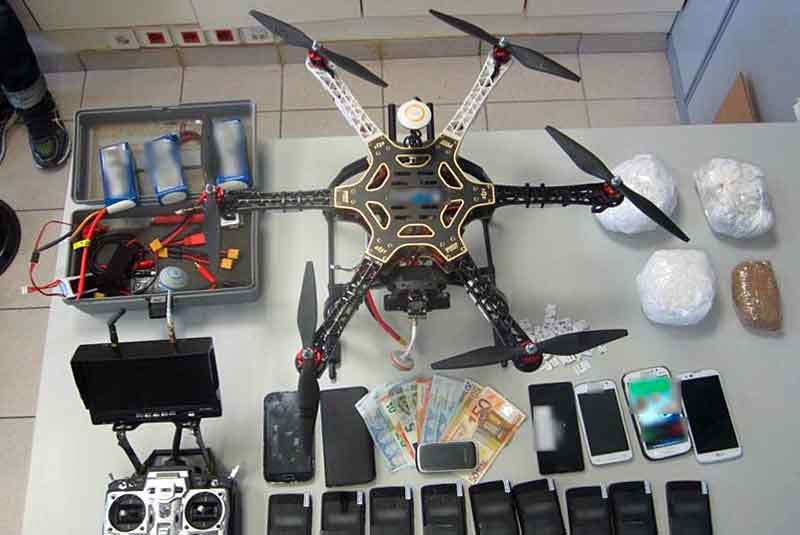
In more unique circumstances, drugs have been reduced into pastes, liquids, or powders that are concealed on envelopes, kid’s drawings, and photographs that allow the drugs to be ingested by licking the papers.
Just as confounding, drugs and cell phones are routinely stuffed in footballs and soccer balls to be dumped over the yard wall where inmates can retrieve the goods.
In Phillips State Prison in Buford, GA, a dead cat was stuffed with eight cell phones and thrown over the prison wall for an inmate to retrieve3.
2 CELL PHONES ANDTHE MINI KEY FOB CELL PHONE EPIDEMIC
Technological innovation has long been a key concept to cause disruption and invigorate consumer behavior.
As we have seen, innovation also tends to result in the harnessing of greater capability in a smaller form factor.
You only have to turn to the evolution of cell phones from the “brick” phone to the iPhone. Yet, while technology has mass productivity appeal, it usually also comes with some level of unintended consequences.
Case in point: The prisoners’ phone (aka, ‘Beat the Boss phone’).
This tiny mobile phone has caused significant disruption for prisons all over the world, primarily the United Kingdom.
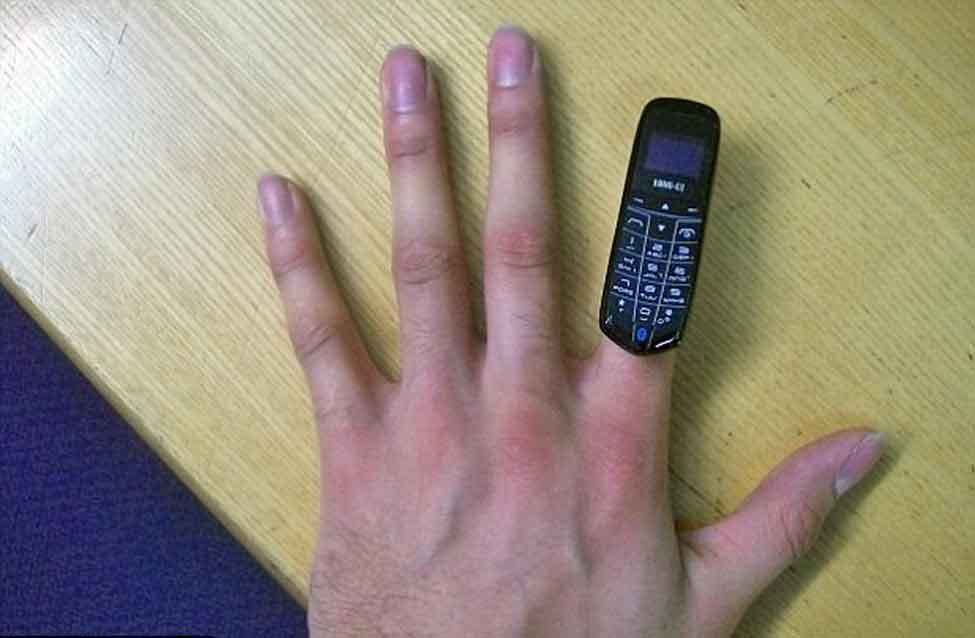
These phones are (nearly) metal free and are smaller in size than many lighters – a disturbing combination for correctional officers fighting contraband problems.
These phones can be purchased for approximately $30 from popular online retailers, and can fetch $300 – $1,000 in prisons.
Provided the small size, these phones are smuggled in to inmates in very inconspicuous ways: nestled into candy bars or internalized in body cavities where few detection technologies can detect them.
(Learn More. A mobile phone explicitly designed for illegal smuggling into prisons is being sold by online retailer Amazon. Courtesy of TV News and YouTube. Posted on Apr 19, 2016)
In addition to the small prisoners’ phones, cell phones in general continue to be an issue in and of themselves.
According to the National Offender Management Service (NOMS), 7,451 mobile phones were confiscated across UK prisons.
That number increased to 9,745 in 2014.
If you think that number is high, California alone confiscated nearly 8,000 phones in 2015.
 3 PHONES AS DATA STORAGE VS. DATA TRANSMISSION
3 PHONES AS DATA STORAGE VS. DATA TRANSMISSION
As regulations keep advancing, and make moves toward blocking cell phone signals, corrections institutions must keep in mind the possible use of a cell phone as a data storage device as opposed to a data transmission device.
On March 23, 2017, in a 3-0 vote, the FCC has provided greater support for jails and prisons to use technology to block cellular signals, thereby making it more difficult for inmates to use their cell phones.
 The order also called for wireless carriers to work with corrections facilities more closely to enable the use of technology based interdiction systems, such as managed access systems (MAS).
The order also called for wireless carriers to work with corrections facilities more closely to enable the use of technology based interdiction systems, such as managed access systems (MAS).
With the movements to stop calls, texts, and data transmission, the focus begins moving to the physical phones themselves as a remaining issue.
Even without signal and data access, the phone remains as a useful data storage device.
Inmates can record audio and video messages for the physical transmission of the phone, or the SD card from within the phone, outside the walls of the facility to be retrieved.
As a result, there may a rising trend of cell phones as data storage devices rather than data transmission devices.
4 CONTRABAND MOVES FREQUENTLY
Here today, gone tomorrow as the saying goes.
The laws of supply and demand drive the migration of contraband through the prison system.
Where there is a need and a reason for action, the contraband will flow to it. Internal demand for weapons, drugs or communication with the outside drive the process.
The key contraband items are phones as these are used to organize and coordinate smuggling of other contraband.
Inmates are always conceiving ways to try and keep an edge on staff so they are not caught with contraband.
The one luxury that Inmates have is time, and with time comes the conniving manner of seeing how officers watch inmates – their tactics, their tools, and signs of a pending sweep.
(WARNING: Graphic Language. BBC III investigates the increasing amount of contraband getting into UK prisons, uncovering the links in the chain on both sides of the law. Courtesy of BBC III and YouTube. Posted on Nov 7, 2016)
5 PEOPLE ARE THE WEAKEST LINK
People are the biggest factor affecting the usefulness of technology, tools, processes, regulations or standard operating procedures in contraband control.
Unpredictable actions and behaviors are often at the root of failed technology introductions or the implementation of new tools.
There are many people, not only corrections officers, that contribute to aiding and abetting in criminal behavior.
So, for most interdiction advancements to work, there must be success factors built in.
This can include extensive new product training by the manufacturer of the product, enhancements to standard operating procedures that take into consideration the effect of new products, and methods for reporting and continuous improvement. 3
(Captain Kevin Branch at Maryland Correctional Institution for Women says drugs were found under stamps or in magazines. Courtesy of ABC News and YouTube. Posted on Feb 24, 2015)
Key Steps In Intervention – A Checklist
Corrections Officers face daunting challenges with contraband every day; working in a system that always seems to have one-step forward and two-steps back, never truly eradicating the problem.
While Institutions keep pace with contraband trends, there must be practices in place to look objectively at their interdiction efforts.
ASSESS THE CURRENT SITUATION WITH FRESH EYES
Continuously re-assessing the environment is critically important to staying on top of contraband issues before they balloon out of control.
Looking at trends and understanding how new methods of entry and new technology are evolving can provide intelligence for adapting.
Also, constant scrutiny and review of comprehensive entrance and exit policies and procedures.
THINK INSIDE-OUT
Think about how inmates plan their activities, i.e. their visits, time in the yard, gym etc.
It is almost like trying to stop running water – when you block one route, water travels and creates another.
It is similar with inmates – if one method of gaining contraband gets blocked they will seek another.
In your mind, what would you do if you were an inmate that wanted to get something?
What would you see as the options?
TAKE A MULTI-LAYERED APPROACH
Safety and security is not one size fits all.
Each environment has unique variables to consider, which makes it even more important to have multiple layers of security protocols as well as products.
Detection is the first layer, followed by and extraction and analysis. Know which procedures and tools are necessary for each layer, and how the layers work together as a total approach.
COLLABORATE
Some of the best way to stay on top of trends and product effectiveness is to collaborate with your colleagues in both nearby regions as well as across the country.
Working groups and regular touch points (outside of annual trade shows) are a great way to share best practices and track early warning signs of a shift in activity.
UNDERSTAND ADVANCES IN TECHNOLOGY
While some product technology has remained largely unchanged, other technologies have made an entry into the market to provide new tools for officers to fight contraband problems smarter.
Get to know the technology space; what is available, where it might serve you best, cost of ownership, benefit -to-cost ratio etc.
For example, Ferromagnetic Detection Systems (FMDS) (e.g. Cellsense® Plus) is one example of a technology that has been developed for screening that was not on the market several years ago.
(Unlike conventional metal detectors, Cellsense Plus is entirely passive, emitting no signal or fields, so there are no health and safety concerns when scanning subjects. Cellsense Plus has no effect on electronic devices such as pacemakers and is harmless to pregnant women. Courtesy of Metrasens and YouTube. Posted on Oct 13, 2017)
Today, it is making a positive impact in more effective screening and detection of small metal objects – even down to the size of staple.
NEXT GENERATION CONTRABAND DETECTION, TODAY.
Cellsense® Plus is the latest generation of cellphone and contraband detection, leveraging technology advancements from the original Cellsense to further enhance effectiveness for correctional facilities.
Cellsense Plus prevents the smallest concealed items from escaping detection by demonstrating a 2x sensitivity of detection in areas where contraband is most likely to be found, while also reducing environmentally caused nuisance alarms by 50%*.
UNRIVALED DETECTION CAPABILITIES
Due to its advanced contraband and cell phone detection capabilities, Cellsense Plus can detect contraband that other detection technologies are unable to discover (including internalized contraband) while ignoring non-ferrous metals that are not contraband threats.
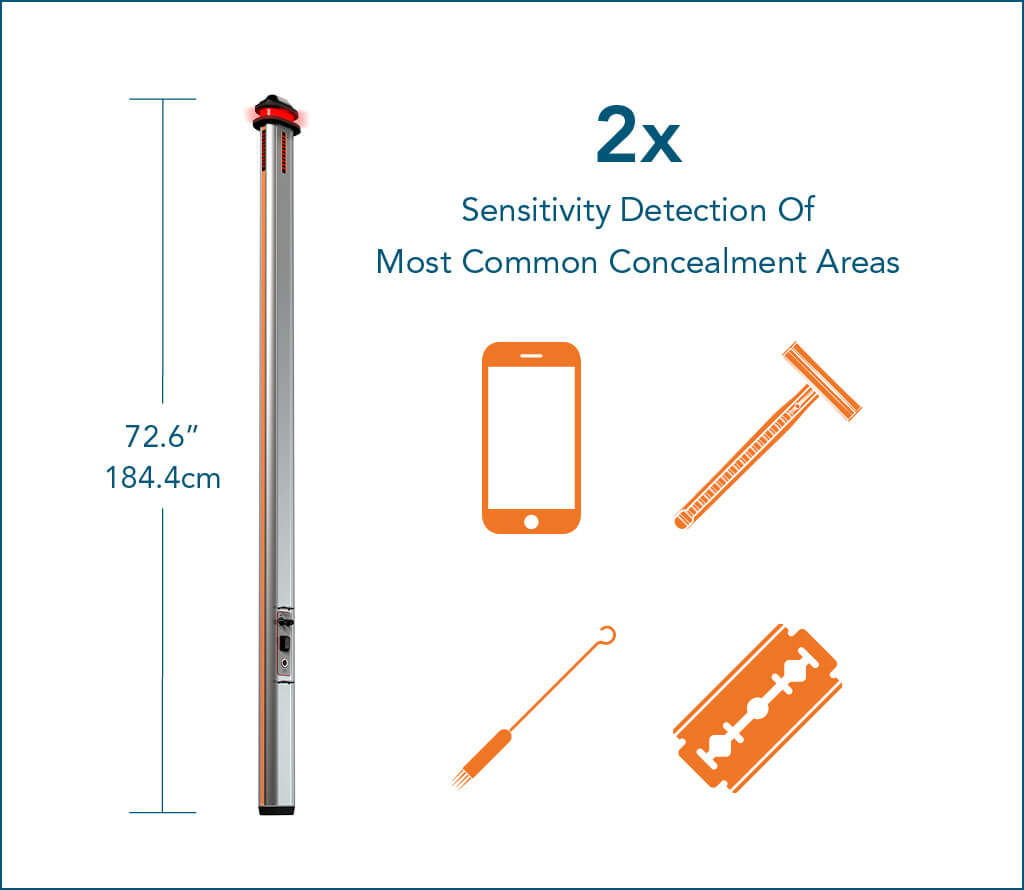 FILLS THE GAP CREATED BY TRADITIONAL SECURITY SYSTEMS
FILLS THE GAP CREATED BY TRADITIONAL SECURITY SYSTEMS
While many security systems are focused on checkpoint screening at the entrance, Cellsense Plus was developed as a tool to screen throughout the facility, in a manner that addresses contraband that enters through non-traditional points of entry (over the wall, smuggled, etc.)
IMMEDIATE DEPLOYMENT AND RESULTS
Featuring intuitive controls and no calibration, Cellsense Plus is operational in 10 seconds.
To ensure effective deployment right out of the gate, Metrasens provides on-site training from staff that have over 40 years’ combined experience in corrections.
CELLSENSE Features Include
-
2x detection sensitivity in major concealment areas
- Detect very small contraband items from razors to tattoo needles, often missed by alternative technologies
-
Reduces nuisance alarms by 50%
- Ambient “Noise” created by surrounding activity is greatly reduced in Cellsense Plus. Advancements in our technology provide immunity to nearby metal doors and other stationary metal objects.
-
Portable, full body screening for small and large size objects
- Full screen of the entire body in a single walk-by at high throughput (40 subjects per minute)
-
Versatile
- Functions in vertical and horizontal positions to screen inmates and their belongings
-
Easy to deploy
- Setup and begin screening in 10 seconds

-
Detection of cell phones
- Detect cell phones when on or off, and anywhere on the person or internalize
-
Covert screening
- Useful for surprise and covert screening of inmates and their belongings, including mattresses, laundry, and commissary items
-
Safe & non-emitting
- Does not radiate or emit, making it 100% passive and safe for all individuals including those with pacemakers or who are pregnant
-
Ruggedized
- Designed to withstand harsh conditions and treatment, both indoors and outdoors
-
Behind-the-wall training included
- On-site training, both in classroom and behind the wall, provided by Metrasens certified trainers with 40 years’ combined experience in prison security
Learn More about Cellsense Plus Datasheet (US), Cellsense Plus Datasheet (Outside US).
METRASENS at a Glance
 Founded in 2005, Metrasens develops advanced magnetic technology built on the belief that they can make the world a safer place.
Founded in 2005, Metrasens develops advanced magnetic technology built on the belief that they can make the world a safer place.
Their products emulate this belief and are carefully designed to address deficiencies in conventional security practices.
Metrasens provides industry leading expertise in the field of magnetics for use in MRI safety, corrections security, and other security applications.
Metrasens operates its technology and manufacturing center in the UK, along with a North American sales and customer service hub in Chicago, and a global network of distribution partnerships.
For more information, visit www.metrasens.com.
Metrasens in 2017 ‘ASTORS’ Homeland Security Awards Program
-
Metrasens
- Platinum ‘ASTORS’ Award Winner
- Proscreen 500
- Best Cell Phone Detection Solution
Over 100 distinguished guests from National, State and Local Governments, and Industry Leading Corporate Executives from companies allied to Government, gathered from across North America and the Middle East to be honored from disciplines across the Security Industry in their respective fields which included representatives from:

- The Department of Homeland Security
- The Department of Justice
- The Security Exchange Commission
- State and Municipal Law Enforcement Agencies
- Leaders in Private Security
Recognized for their Innovative Training and Education Programs, Outstanding Product Development Achievements and Exciting New Technologies to address the growing Homeland Security Threats our Nation is facing.
To Learn More about the ‘ASTORS’ Homeland Security Awards Program, see 2017 ‘ASTORS’ Homeland Security Award Winners Honored at ISC East.
Nominations are now being accepted for the 2018 ‘ASTORS’ Homeland Security Awards at https://americansecuritytoday.com/ast-awards/.
American Security Today will be holding the 2018 ‘ASTORS’ Awards Presentation Luncheon to honor Nominees, Finalists and Winners in November 2018, in New York City.
Metrasens is a world’s leading provider of advanced magnetic detection technologies.
With a technology centre and manufacturing facility in the UK, a North American sales and customer service hub in Chicago and a global network of distributors, the company’s innovative products are designed to address deficiencies in conventional screening methods and make the world safer and more secure.
Metrasens’ core technologies have a wide range of real-world applications, embodied by solutions that are easy to adopt and simple to use.
For more information about Metrasens, please visit the company website at http://www.metrasens.com.
For ‘ASTORS’ Sponsorship Opportunities and More Information on the AST 2018 ‘ASTORS’ Homeland Security Awards Program, please contact Michael Madsen, AST Publisher at: mmadsen@americansecuritytoday.com or call 732.233.8119 (mobile) or 646-450-6027 (office).
To Learn More… please see Featured Article by Guest Contributor Jim Viscardi, Metrasens Vice President of Global Security, in AST April *Fully Interactive* Magazine titled:
‘Casting a Wider Net: More Effective Weapon Mass Screenings at Events’ at https://joom.ag/qr4Y
1 FAA releases 2016 to 2036 Aerospace Forecast. Federal Aviation Administration. Web. March 2016. www.faa.gov. 2 Craig,Todd R.; Russo,Joe; Shaffer,Dr. John S. “Eyes in the Skies – The latest threat to correctional institution security.” Corrections Today. Web. November/December 2016. www.justnet.org. 3 Stoker, Patrick. “Cellphones smuggled into prisons alarm state officials.” Gainesville Times. Web. January 2012. www.gainesvilletimes.com. 4 Stratton, Allegra. “Beat the Boss: UK prisons’ mobile phone epidemic.” ITV. Web. 19 April 2016. www.itv.com. 5 Insert reference for CA cell phone confiscation 6 Wiltz, Teresa. “States bedeviled by contraband cellphones in prisons.” PBS Newshour. Web. June 7, 2016. www.pbs.org.
















